The International Institute for Species Exploration at Arizona State University has released its annual top 10 list of new species discovered last year. This time the list includes a two inch penis-like mushroom, a minnow named after Bram Stoker’s world-famous horror-character, a bomb-throwing deep sea worm, a giant carnivorous plant named after TV personality and conservationist David Attenborough, and a beautifully patterned frogfish [see photos below].
“Charting the species of the world and their unique attributes are essential parts of understanding the history of life. It is in our own self-interest as we face the challenges of living on a rapidly changing planet,” says Quentin Wheeler, director of the International Institute for Species Exploration at Arizona State University and an entomologist in the School of Life Sciences.
Scientists believe that the world is currently undergoing a mass extinction due to human activities including deforestation, habitat loss, invasive species, poaching and hunting, mining, pollution, overharvesting, and climate change. With current rates of extinction estimated anywhere from 100 to 1000 times the background extinction rate—i.e. the rate of average extinctions according to fossil records—the current mass extinction could turn out more devastating than the comet that destroyed the dinosaurs.
While species are disappearing at incredibly high rates, scientists are scrambling to discover new species. To date researchers have described nearly 2 million species, but they estimate the number of species inhabiting Earth could be anywhere from 10 to 50 million. Recent discoveries of microbes in the ocean could push these estimates even higher.
“Most people do not realize just how incomplete our knowledge of Earth’s species is or the steady rate at which taxonomists are exploring that diversity. We are surrounded by such an exuberance of species diversity that we too often take it for granted,” says Wheeler.
To nominate species for next year’s list (2010): http://species.asu.edu/species-nomination
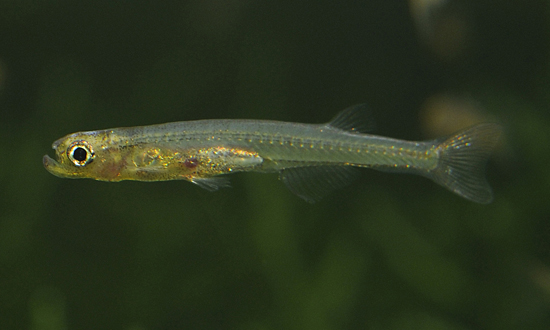
Danionella dracula, a small toothy fish discovered in Myanamar was rightfully named after the world’s most famous vampire. ‘Dracula minnow’ males use large fangs—relative to body size of 17 millimeters (0.6 inches)—to battle with other males. This is the first record of oral teeth in the largest family of freshwater fish, Cyprinidae. Photo by: Ralf Britz, Department of Zoology, The Natural History Museum, London. Photo Courtesy of: of the International Institute for Species Exploration at Arizona State University.
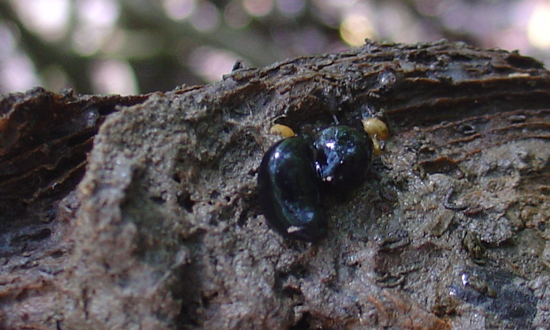
The Aiteng (Aiteng ater) is a slug of insect-nightmare. Discovered in Thailand, this sea slug is unusual for its diet. Instead of eating algae or gastropod eggs like other sea slugs, this one preys on insects. The slug is so odd it has been given its own family: Aitengidae. Photo by: Cornelis Swennen, Prince of Songkla University. Photo Courtesy of: of the International Institute for Species Exploration at Arizona State University.
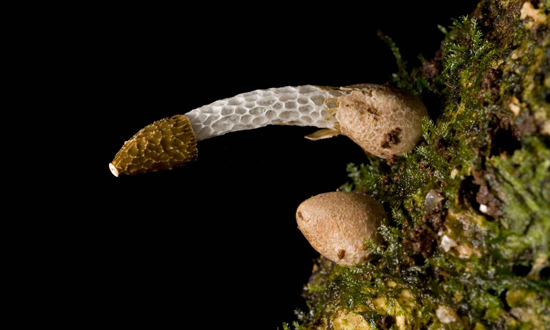
This two inch phallic mushroom (Phallus drewsii) from the island of São Tomé in Africa was named after frog-expoert Robert C. Drewes at the California Academy of Sciences for his 30 years of work in Africa and as leader of the expedition. Apparently, Drewes has a sense of humor for being immortalized in a two-inch fungus that looks remarkably similar to a penis. Photo by: Brian A. Perry, University of Hawai’i at Hilo. Photo Courtesy of: of the International Institute for Species Exploration at Arizona State University.
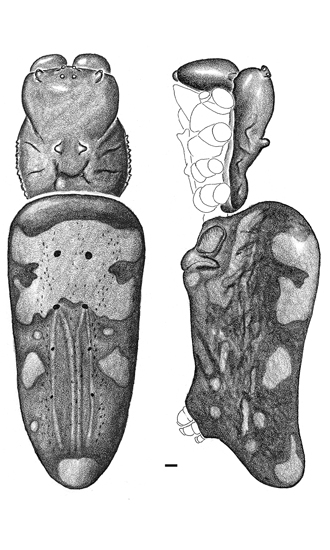
Komac’s golden orb spider is noteworthy since it’s the first new species of golden orb spider to be discovered in 130 years. It is also the world’s largest golden orb spider: females, including legs, are 12 centimeters (4 inches) long. It was discovered in South Africa and Madagascar. Photo by: Photographer: Matjaž Kuntner, Scientific Research Centre of the Slovenian Academy of Sciences and Arts. Photo Courtesy of: of the International Institute for Species Exploration at Arizona State University.
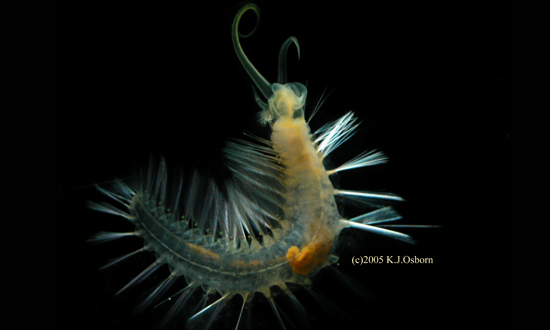
A polychaete worm that throw ‘bombs’, the Swima bombiviridis has gills that it can drop off and will illuminate with green bioluminescence for several seconds. The ‘bombing’ by this sea worm is thought to be used to defend itself from predators. A deep sea species, it was discovered off the California coast. Photo by: K.J. Osborn. Photo Courtesy of: of the International Institute for Species Exploration at Arizona State University.
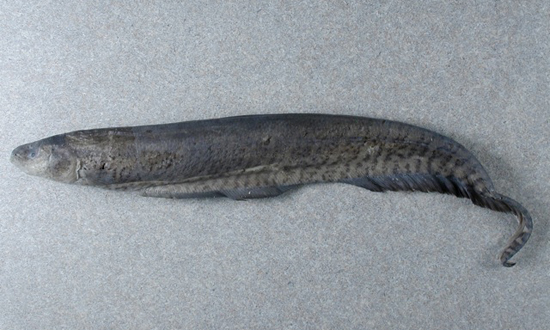
This species of electric fish named Gymnotus omarorum has been used for research for over 30 years, yet was not recognized as a new species until last year. Photo by: James Albert, University of Louisiana at Lafayette. Photo Courtesy of: of the International Institute for Species Exploration at Arizona State University.
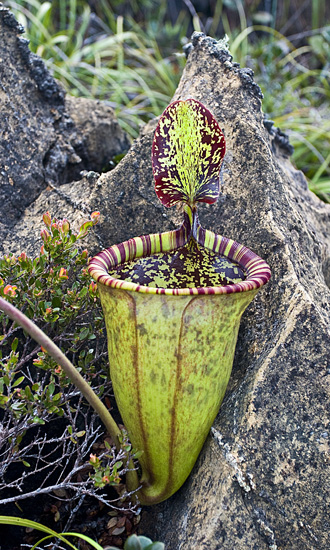
Attenborough’s pitcher Nepenthes attenboroughii was named after conservationist and documentarian David Attenborough for his 80th Birthday. This likely Critically Endangered pitcher plant is only known from one location in the Philippines where it feeds on unwary insects. It is nearly a foot (30 centimeters) tall. Photo by: Alastair Robinson, University of Cambridge. Photo Courtesy of: of the International Institute for Species Exploration at Arizona State University.
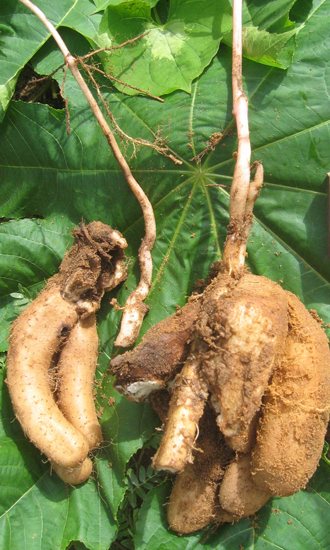
A new species of edible yam (Dioscorea orangeana) has surprised scientists because it sports several lobes, instead of just one, reminding some of a cow’s udder. Scientists are recommending that it be listed as Critically Endangered since it is heavily harvested in Madagascar and is only known from one location. Photo by: Claude Marcel Hladik, Museum National d’Histoire Naturelle. Photo Courtesy of: of the International Institute for Species Exploration at Arizona State University.
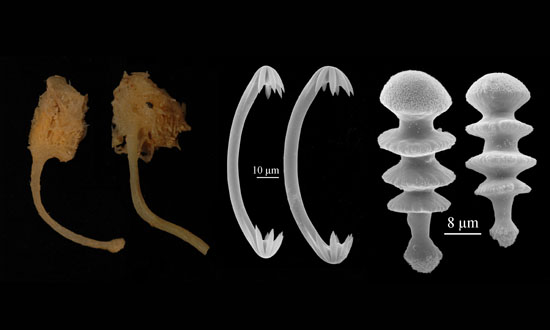
This odd newly-discovered carnivorous sponges has also brought with it a new term trochirhabd, which describes the sponges special spicule, which is spindle-like. Known from New Zealand the species was named Chondrocladia (Meliiderma) turbiformis. Photo by: Jean Vacelet, CNRS-Université de la Méditerranée. Photo Courtesy of: of the International Institute for Species Exploration at Arizona State University.
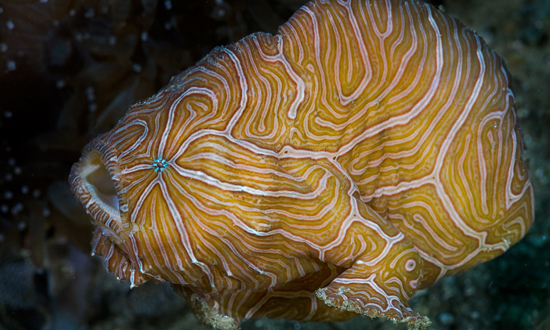
This stunning new species of frogfish is notable both for its wild patterning and its flat face. The species is named Histiophryne psychedelica for its ‘psychedelic’ pattern. The new fish was discovered in Indonesian waters. Photo by: ©David Hall/seaphotos.com. Photo Courtesy of: of the International Institute for Species Exploration at Arizona State University.
Related articles
World’s largest golden orb weaving spider discovered in South Africa and Madagascar

(10/21/2009) Golden orb weaving spiders have been garnering media attention recently. Last year stunning photographs of a golden orb weaver eating a bird in Australia made world coverage. Now, over a century after the last legitimate species of golden orb weaver was discovered, researchers have announced the discovery of a new and rare species of golden orb weaving spider in Africa and on the island of Madagascar. On average the new species is the largest of all golden orb weavers known.
Newly discovered deep sea worms throw bioluminescent ‘bombs’

(08/20/2009) Researchers from Scripps Institution of Oceanography at UC San Diego have announced in Science the discovery of seven new species of deep sea worms, five of which drop orb-like parts of their body which cause a brilliant green display of bioluminescence. For this reason researchers have nicknamed them the ‘green bombers’. The worms are not just new species, but a clade of animals entirely unknown to science until now.
New carnivorous plant big enough to swallow a rat
(08/11/2009) A newly discovered carnivorous plant in the central Philippines is large enough to catch a rat, according to a story by the BBC. Nepenthes attenboroughii, named after naturalist and broadcast David Attenborough, is a member of the pitcher plant family, so-called because it is shaped like a large pitcher. The plant preys on insects and animals that fall into its gaping maw.
Photos: top 10 species discovered in 2008

(05/22/2009) Scientists documented 18,516 previously unknown species in 2007, report researchers from the International Institute for Species Exploration at Arizona State University, who also unveiled the “top 10 new species” described in 2008. The “top 10” species include a pea-sized seahorse, caffeine-free coffee, bacteria that live in hairspray, a tiny snake, a two foot long insect from Malaysia, a fossilized specimen of the oldest known live-bearing vertebrate, a snail whose shell twists around four axes, a ghost slug from Wales, a deep blue damselfish, and a palm that flowers itself to death.